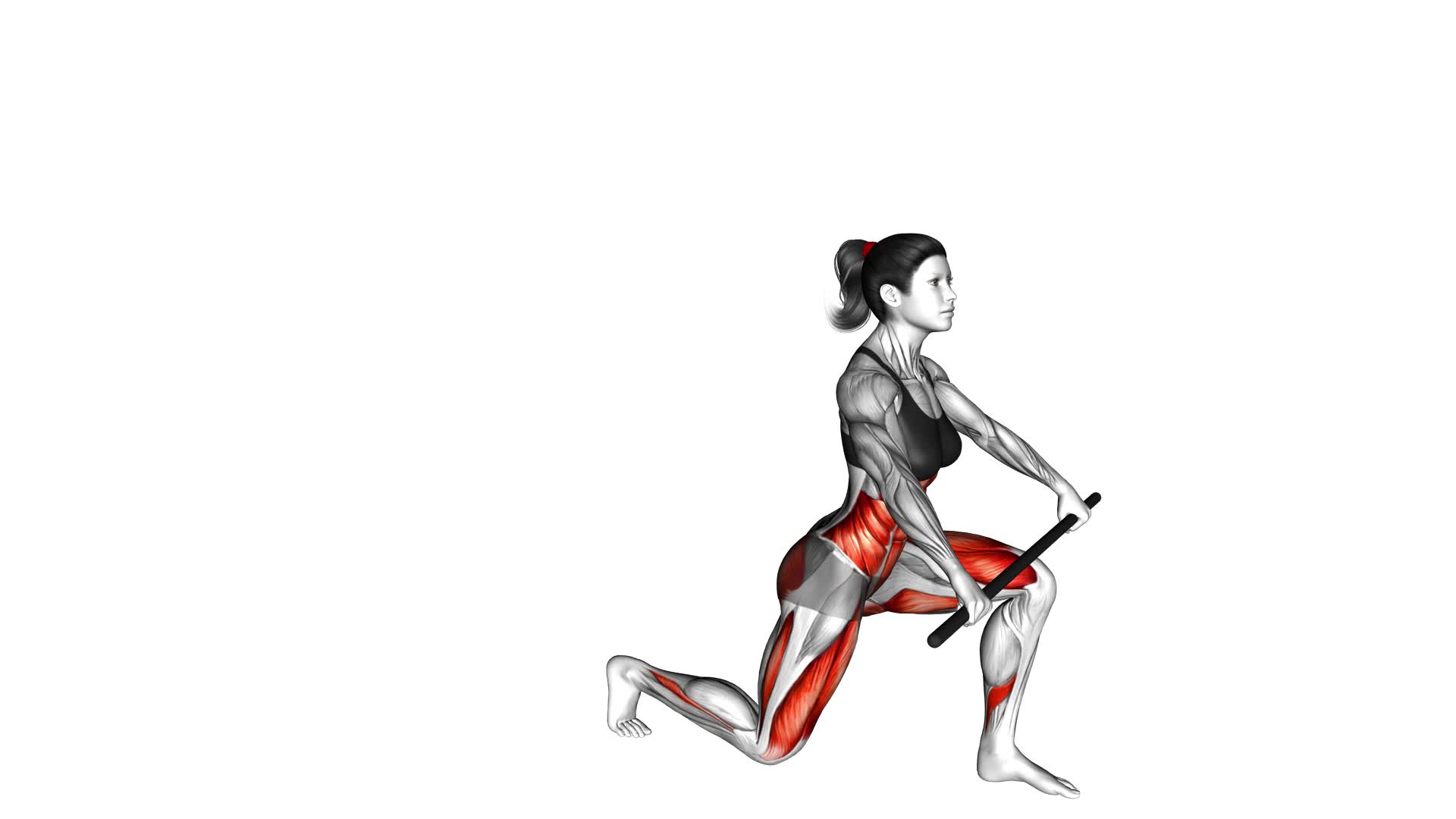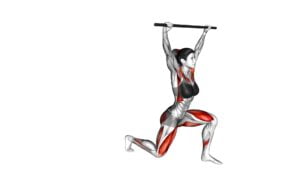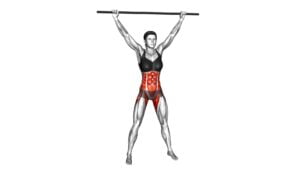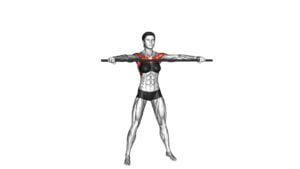Stick Twist Lunge Stretch (female) – Video Exercise Guide & Tips

Are you looking to improve your flexibility and strengthen your core? The Stick Twist Lunge Stretch is a great exercise to add to your routine.
Watch This Exercise Video
This video exercise guide will show you how to properly perform the stretch and provide tips to make it more effective.
Whether you're a beginner or an experienced fitness enthusiast, this stretch is suitable for all levels.
So grab a stick, twist, lunge, and start reaping the benefits of this fantastic exercise.
Key Takeaways
- The Stick Twist Lunge Stretch improves flexibility by engaging multiple muscle groups.
- Proper form and technique are important in order to maximize the stretch and prevent injuries.
- There are variations and modifications available to customize the stretch to individual needs and abilities.
- It is important to listen to your body, avoid pain or discomfort, and gradually increase intensity over time.
Benefits of the Stick Twist Lunge Stretch
To maximize the effectiveness of your workout, try incorporating the stick twist lunge stretch, which can help improve flexibility and strengthen your core. This dynamic exercise targets multiple muscle groups, providing various benefits.
One of the key advantages of the stick twist lunge stretch is its ability to improve flexibility. As you twist your torso and lunge forward, you engage your hip flexors, quadriceps, and hamstrings, stretching and lengthening these muscles. Regular practice of this stretch can gradually increase your range of motion, allowing you to move more freely and perform other exercises with greater ease.
Additionally, the stick twist lunge stretch helps reduce muscle tension. As you twist your upper body, you engage your obliques and back muscles, promoting relaxation and releasing any built-up tension. This can be particularly beneficial for individuals who spend long hours sitting or have a sedentary lifestyle, as it helps alleviate tightness in the lower back and hips.
Proper Form and Technique
To ensure proper form and technique for the stick twist lunge stretch, position yourself with the stick resting across your shoulders and step forward into a lunge position.
This exercise is often misunderstood, and there are common misconceptions that can hinder its effectiveness. One of the most common misconceptions is that the stick is just for balance. While balance is important, the stick actually serves as a tool to increase the stretch and intensity of the exercise. By placing the stick across your shoulders, you're creating a deeper stretch in your hip flexors and increasing the challenge on your core muscles.
Another misconception is that this exercise is only beneficial for athletes or advanced exercisers. In reality, the stick twist lunge stretch is suitable for individuals of all fitness levels. The importance of flexibility can't be overstated. It plays a crucial role in maintaining proper posture, preventing injuries, and improving overall physical performance.
Variations and Modifications
You can modify the stick twist lunge stretch by adjusting the depth of your lunge. This allows you to customize the stretch based on your flexibility and comfort level. Here are some variations and modifications you can try to enhance your stick twist lunge stretch:
- Advanced modifications: Once you're comfortable with the basic stick twist lunge stretch, you can challenge yourself by incorporating additional elements. For example, you can hold a dumbbell or kettlebell in your hands to increase the resistance and engage your muscles even more. Another advanced modification is to perform the stick twist lunge on an unstable surface like a balance board or a stability ball, which will further challenge your balance and core stability.
- Stretching alternatives: If you find the stick twist lunge stretch too challenging or if you have any specific limitations, there are alternative stretches you can try. One option is the standing torso twist stretch, where you stand with your feet shoulder-width apart and twist your upper body from side to side. Another alternative is the seated torso twist stretch, where you sit on the floor with your legs extended in front of you and twist your upper body to each side.
Remember to always listen to your body and modify the exercises according to your needs and abilities. It's important to find the right balance between pushing yourself and avoiding any pain or discomfort.
Common Mistakes to Avoid
To avoid common mistakes, it's important to pay attention to proper form and technique when performing the stick twist lunge stretch. By doing so, you can significantly reduce the risk of injuries and maximize your flexibility.
One common mistake to avoid is leaning too far forward during the lunge. This can strain your lower back and put unnecessary pressure on your knees. Instead, focus on maintaining an upright posture throughout the exercise, keeping your chest lifted and your core engaged.
Another mistake to watch out for isn't twisting enough during the exercise. Remember that the stick twist lunge stretch is designed to target both your lower body and your upper body. Make sure to rotate your torso fully as you twist, allowing your arms to follow the movement of the stick.
Lastly, avoid rushing through the exercise. Take your time to perform each lunge with control and precision, focusing on the stretch and the contraction of your muscles.
Tips for Incorporating the Stretch Into Your Fitness Routine
Incorporating the stretch into your fitness routine can enhance flexibility and improve overall muscle function. Here are three tips to help you seamlessly integrate this stretch into your routine:
- Start slow: When incorporating the stick twist lunge stretch into your fitness routine, it's important to start slow and gradually increase the intensity. Begin with a lighter stick or resistance band and perform a few repetitions on each side. As you become more comfortable and flexible, you can increase the number of repetitions and the resistance level.
- Find the right time: Choose a time during your workout when your muscles are warmed up and more receptive to stretching. This could be after a cardio session or as a part of your cool-down routine. By incorporating the stretch when your muscles are already warmed up, you can maximize its benefits and minimize the risk of injury.
- Listen to your body: Pay attention to how your body feels during the stretch. If you experience any pain or discomfort, ease off and modify the stretch to suit your needs. It's important to remember that everyone's flexibility levels are different, so don't push yourself too hard. Focus on gradually improving your range of motion over time.
Frequently Asked Questions
How Many Repetitions of the Stick Twist Lunge Stretch Should I Do?
You should aim to do an appropriate number of repetitions for the stick twist lunge stretch.
It's important to listen to your body and start with a manageable amount.
Gradually increase the repetitions as you become more comfortable and confident in your form and technique.
Remember to maintain proper alignment and engage your core throughout the exercise.
Consulting with a fitness professional can help you determine the ideal number of repetitions for your individual needs and goals.
Can Men Also Perform the Stick Twist Lunge Stretch?
Yes, men can also perform the stick twist lunge stretch. Gender inclusivity in fitness routines is important, and this stretch can benefit everyone.
It's a great exercise for improving flexibility and targeting the muscles in your legs and core.
Remember to listen to your body and make modifications as needed. Different body types may require adjustments in stretching exercises, so feel free to adapt the movement to suit your needs.
Stay consistent and enjoy the benefits of this stretch!
Is It Normal to Feel Some Discomfort or Tightness During the Stretch?
Feeling some discomfort or tightness during the stick twist lunge stretch is normal. It's a sign that you're stretching your muscles and improving flexibility.
However, it's important to listen to your body and not push yourself too hard. Focus on maintaining proper form and technique to avoid injury.
If the stretch feels too intense, you can modify it by reducing the range of motion or using a support like a chair or wall.
Can the Stick Twist Lunge Stretch Help Improve Flexibility in Other Areas of the Body?
The stick twist lunge stretch is a great exercise to improve flexibility in other areas of your body.
Incorporating this stretch into your routine can benefit your overall flexibility and range of motion.
By twisting and lunging, you engage multiple muscle groups, helping to increase flexibility in your hips, core, and upper body.
Additionally, there are modifications and variations of this stretch available for different fitness levels, making it accessible to everyone.
Are There Any Specific Warm-Up Exercises Recommended Before Performing the Stick Twist Lunge Stretch?
Before performing the Stick Twist Lunge Stretch, it's important to do some warm-up exercises to prepare your body. These warm-up exercises can help increase blood flow, loosen up your muscles, and reduce the risk of injury.
Some recommended warm-up exercises include jogging in place, jumping jacks, or arm circles.
Conclusion
Incorporating the stick twist lunge stretch into your fitness routine can provide numerous benefits. This stretch is particularly effective in improving flexibility and increasing range of motion in the hips and lower body. To maximize its effectiveness, it is important to maintain proper form and technique throughout the exercise. Additionally, variations and modifications can be made to cater to individual fitness levels and goals. By avoiding common mistakes and following the tips provided, you can ensure a safe and effective stretch. So start incorporating this stretch into your routine today and experience the overall fitness improvements it can bring.

Author
Years ago, the spark of my life’s passion ignited in my mind the moment I stepped into the local gym for the first time. The inaugural bead of perspiration, the initial endeavor, the very first surge of endorphins, and a sense of pride that washed over me post-workout marked the beginning of my deep-seated interest in strength sports, fitness, and sports nutrition. This very curiosity blossomed rapidly into a profound fascination, propelling me to earn a Master’s degree in Physical Education from the Academy of Physical Education in Krakow, followed by a Sports Manager diploma from the Jagiellonian University. My journey of growth led me to gain more specialized qualifications, such as being a certified personal trainer with a focus on sports dietetics, a lifeguard, and an instructor for wellness and corrective gymnastics. Theoretical knowledge paired seamlessly with practical experience, reinforcing my belief that the transformation of individuals under my guidance was also a reflection of my personal growth. This belief holds true even today. Each day, I strive to push the boundaries and explore new realms. These realms gently elevate me to greater heights. The unique combination of passion for my field and the continuous quest for growth fuels my drive to break new ground.







